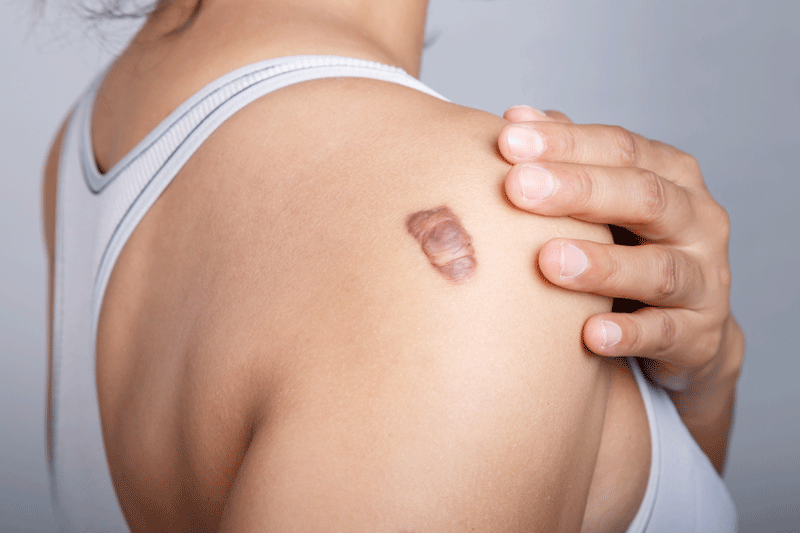AN-cicatrices chéloïdes
Keloid scars

Keloid scars are inflammatory scars that appear thick, hardened and puffy. This phenomenon is caused by an overproduction of collagen in the dermis during the repair of the connective tissue, where fibrous scar tissue replaces the normal skin tissue. This overproduction is accompanied by an overgrowth of dermal cells: the fibroblasts. This unsightly growth of the dermis can occur as a result of skin trauma, injury, shingles, burns, folliculitis, certain skin diseases such as acne, scarring after a vaccination, or after an incision or surgery. Keloid scars can be painful and can cause itching and irritation.
